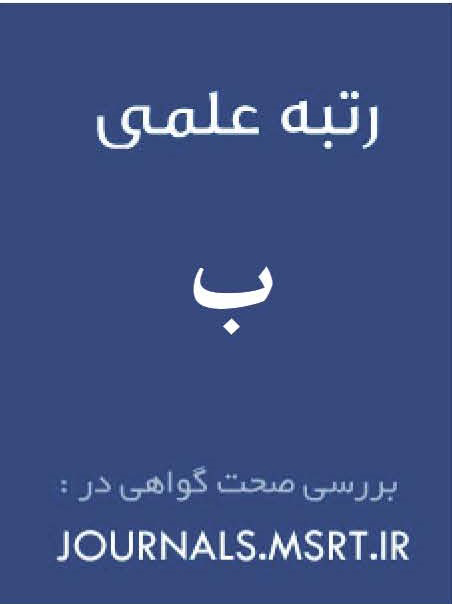The Rationale of Criminal Liability Arising from Ta’dib and Ta’zir with a Perspective on the Criminal Laws of Iran and Egypt
Keywords:
Criminal Liability, Ta'dib, Ta'zir, Iranian Law, Egyptian LawAbstract
The present research examines the jurisprudential and legal foundations of criminal liability arising from ta’dib (disciplinary punishment) and ta’zir (discretionary punishment) within the legal frameworks of Iran and Egypt. The primary objective of this study is to conduct a comparative analysis of criminal liabilities related to ta’dib and ta’zir, investigate the relevant jurisprudential principles and rules, and assess the legal challenges arising from this issue in the two aforementioned legal systems. The significance of this topic lies in its impact on human rights and the preservation of human dignity within judicial and educational processes. Ta’dib and ta’zir, as corrective and disciplinary measures, may lead to criminal liabilities that require thorough and comprehensive examination. The research methodology of this study is descriptive-analytical, based on a review of library resources and scholarly articles. The collected data include current laws of Iran and Egypt, judicial rulings, and the opinions of legal scholars and researchers in this field. The findings of this research indicate that the attribution of criminal liability for ta’dib and ta’zir in both legal systems exhibits both similarities and differences. Furthermore, jurisprudential foundations play a significant role in shaping the legal and ethical frameworks of criminal liabilities. In conclusion, this study proposes practical solutions to improve oversight in the administration of justice and mitigate the negative consequences of ta’dib and ta’zir, emphasizing the necessity of revising existing laws. In both Iran and Egypt, domestic disciplinary actions by parents do not entail criminal liability under current law, yet a reform of the penal codes in both countries appears essential in this regard.
Downloads
References
Abbasi-Kalimani, A. (2023). Annotated Child and Adolescent Protection Law. Yazda Legal Publishing.
Abdel-Fattah, N. (2020). Determinants of severe physical disciplinary practices against children in Egypt. Child Abuse and Neglect, 111. https://doi.org/10.1016/j.chiabu.2020.104821
Abdel-Latif, A., Magdy, D., El-Sharkawy, K., William, M., & Magid, M. (2018). Egypt SDS 2030: Between expectations and challenges to implement. The Public Policy Hub.
Aghaeinia, H., & Ebrahim, K. (2003). Special Criminal Law: Crimes Against Physical Integrity (Felonies) Justification of Disciplinary Methods Towards Teachers: A Perspective (Vol. 21). Mizan Publishing.
Ahmadi-Moghaddam, M. (2018). Comparative Study of Kidnapping and Illegal Detention Crimes in Iranian Criminal Law.
Ali-Akbaryan, H. A. (2016). The Role of Justice in Legislation in Islamic Governance. Journal of Jurisprudence, 1(78), 12-29.
Amid Zanjani, A. (2019). Constitutional Law: Including Constitutional Law 1 (Foundations), Constitutional Law 2 (Government Structure and Fundamental Institutions), and Constitutional Law 3 (People and Government). Khorsandi Publishing.
Dolati, M. (2024). Child and Adolescent Protection in International Criminal Law and the 2020 Child and Adolescent Protection Law with an Islamic Perspective. Islamic Jurisprudence and Law Publishing.
Faraj Al-Sidda, A. (1997). Principles of Law. Dar Al-Nahda Al-Arabiya.
Foroutan, Y., Moghadam, I., Dadashi Niaki, M., & Maqsoudi, R. (2020). Critique of Judicial Practice in Exercising the Wife's Right of Retention in Light of Jurisprudential Precedents. Family Jurisprudence and Law, 1(73), 189-218.
Global Initiative to End All Corporal Punishment of Children. (2018). Ending legalised violence against children by 2030: Progress towards prohibition and elimination of corporal punishment in Pathfinder countries.
Goldouzian, I. (2022a). Essentials of General Criminal Law (Aligned with New Curricula): Revised Based on the Islamic Penal Code (2013) and the Law on Reducing Discretionary Imprisonment Sentences (2020). Mizan Publishing.
Goldouzian, I. (2022b). General Criminal Law of Iran. University of Tehran Publishing.
Haj-Yahia, M., & Shor, R. (1995). Child maltreatment as perceived by Arab students of social science in The West Bank. Child Abuse and Neglect, 19(10), 1219-1209. https://doi.org/10.1016/0145-2134(95)21304-5
Hashemi, M. (2017). Constitutional Law of the Islamic Republic of Iran. Dadgostar Publishing.
Heekes, S. L., Kruger, C. B., Lester, S. N., & Ward, C. L. P. Y. (2022). A systematic review of corporal punishment in schools: Global prevalence and correlates. Trauma, Violence, & Abuse, 23(1), 52-72. https://doi.org/10.1177/15248380211059329
Hesham, M., & El-Hebal, A. (2021). "Nabtet Misr": An application to report on cases of children at-risk.
Hillis, S. W., Mercy, J. M., Amobi, A., & Kress, H. C. (2016). Global prevalence of past-year violence against children: A systematic review and minimum estimates. Pediatrics, 137(3). https://doi.org/10.1542/peds.2015-4079
Hurr Ameli, M. b. H. (1989). Detailed Wasa'il Al-Shi'a for Achieving Sharia Issues. Al-Al-Bayt InstituteER -.
Javan-Arasteh, H., & Malek-Afzali, M. (2020). Constitutional Law 3: People and Government (Human Rights, Citizenship Rights, Democracy). Research Institute of Seminary and University.
Kempe, C., Denver, M., Silverman, F., Cincinnati, M., Steele, B., Droegemueller, W., & Silver, H. (1985). The battered child syndrome. Child Abuse and Neglect, 9, 143-154. https://doi.org/10.1016/0145-2134(85)90005-5
Khomeini, S. R. (2020). Tahrir Al-Wasilah Book of Marriage, Chapter on Division, Disobedience, and Discord, Discussion on Disobedience, Issue 1 (Vol. 2). Institute for Compilation and Publication of Imam Khomeini's Works.
Mir-Mohammad Sadeghi, H. (2021). Crimes Against Physical Integrity (With a Comparative Perspective). Mizan Publishing.
Molaei-Onji, M. (2024). Child Labor in Light of the Child and Adolescent Protection Law. Arshadan Educational and Authoring Institute.
Najafi, M. H. (1988). Jawahir Al-Kalam fi Sharh Sharaye' Al-Islam. Dar Ihya Al-Turath Al-Arabi.
Najafi Tavana, A. (2005). Age of Criminal Responsibility for Children in Domestic and International Legal RegulationsJO - Quarterly Journal of Humanities Studies (Law). (8), 95-121.
Najafi Tavana, A. (2021). Special Criminal Law: Crimes Against Physical Integrity. Mizan Publishing.
Nemroodi, A., & Khosrobigi, A. (2024). Insult, Defamation, and Slander. Moeid Mehr Publishing.
Omidi, A., & Omidi, F. (2023). Child and Adolescent Protection Law (Approved May 20, 2020 by the Islamic Consultative Assembly). Johar Hayat Publishing.
Pourbafrani, H. (2022). Special Criminal Law: Crimes Against Physical Integrity. Shahre Danesh Legal Research Institute.
Pourbafrani, H., & Kamran, S. (2022). General Criminal Law: (Society's Reaction to Crime). University of Isfahan Publishing.
Rezvani, S. (2010). Analytical and Comparative Study of Crimes of Slander, Defamation, and Insult. Farhang Sabz Publishing.
Sabzevari, S. A. A.-A. l. (1991). Muhadhab Al-Ahkam. Comprehensive Software of Ahl Al-Bayt Jurisprudence, Islamic Sciences Computer Research Center.
Sadhwani, A., Chhabra, S., Thevarcad, A. T., & Rani, J. S. (2020). Corporal Punishment and Child Right: A Comparative Study. International Journal of Law Management & Humanities, 3(6), 1270-1295.
Saki, M. (2022). Special Criminal Law: 'Four Books in One Volume': Crimes Against Property and Ownership, Public Interests, Physical Integrity, and Moral Personality. Khorsandi Publishing.
Saramy, S. (2020). The Jurisprudential Principle of Denying Oppression in the Holy Quran. Islamic Jurisprudence and Law, 3(12), 27-42.
Sarlak, M. (2023). Comparison of Child Crimes in Psychology and Sociology (Scandinavian Law). Shahrad Publishing.
Shahaneh, S., & Seyyed Mohammad, A. (2003). Islamic Law in the Middle East. SAMT Publishing.
Swailam, I. (2022). On positive parenting: Preventing disciplinary violence against children within Egyptian households.
Tarbiati, H. (2011). The Tradition of Religious Sources in Combating Oppression. Moballeghan Journal, 141(1), 247-261.
Teymouri, M. (2017). Comparison of Illegal Detention and Kidnapping Crimes in Iranian Law. Heltak Publishing.
Yathib, Y. M. b. K. (2008). Guidelines for Islamic Discipline. Education, 1(78SP - 148), 171.
Youssef, R. M., Attia, M. S., & Kamel, M. I. (1998). Children experiencing violence II: Prevalence and determinants of corporal punishment in schools. Child abuse & neglect, 22(9), 975-985. https://doi.org/10.1016/S0145-2134(98)00084-2
Downloads
Published
Submitted
Revised
Accepted
Issue
Section
License
Copyright (c) 2025 میثم تیموری کیا, حیدرعلی جهان بخشی, مهدی اسماعیلی (نویسنده)

This work is licensed under a Creative Commons Attribution-NonCommercial 4.0 International License.









